What the Color of Your Snot Is Trying to Tell You

By:
It's no fun catching a cold. The dreaded nausea, the endless coughing and sneezing, and the countless piles of mucus-filled Kleenex by your bed. Mucus may not be the prettiest thing your body produces, but it serves an important role in your body.
Mucus lines your mouth, nose, sinuses, throat, lungs and gastrointestinal tract and serves as a protective blanket, preventing the tissue underneath from drying out. Not to mention, mucus contains antibodies that help your body recognize invaders like bacteria and viruses, and trap them in its gooey, sticky and inhospitable substance.
And although it may seem like you produce more mucus when you're sick, you produce and swallow 1.5 liters of mucus daily and you don't even notice it. This is due to the consistency of the mucus.
"Typically, the mucus changes character. It gets thicker," director of the Emory Voice Center and assistant professor of otolaryngology at Emory University Michael M. Johns III, MD told WedMD. "When it has mass effect you feel it, and when you feel it, you want to hock."
When your snot begins to thicken and change colors, here is what's going on in your body demonstrated through infographics from Tech Insider.
1. Clear snot
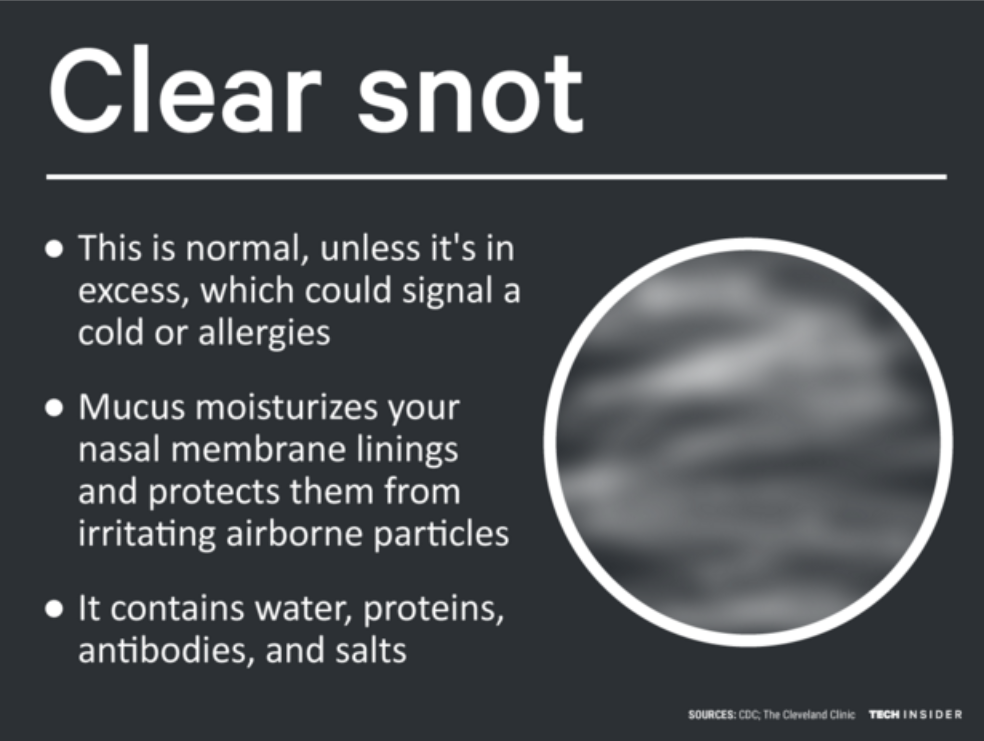 Skye Gould/Tech Insider - techinsider.io
Skye Gould/Tech Insider - techinsider.io
You're healthy. According to the Cleveland Clinic clear mucus is mostly proteins, antibodies and dissolved salt, which flows down the throat and gets dissolved by your stomach. It's the kind of unexplained mucus that drips down your nose on a really chilly day. It's very thin and slippery and perfectly normal.
2. White snot
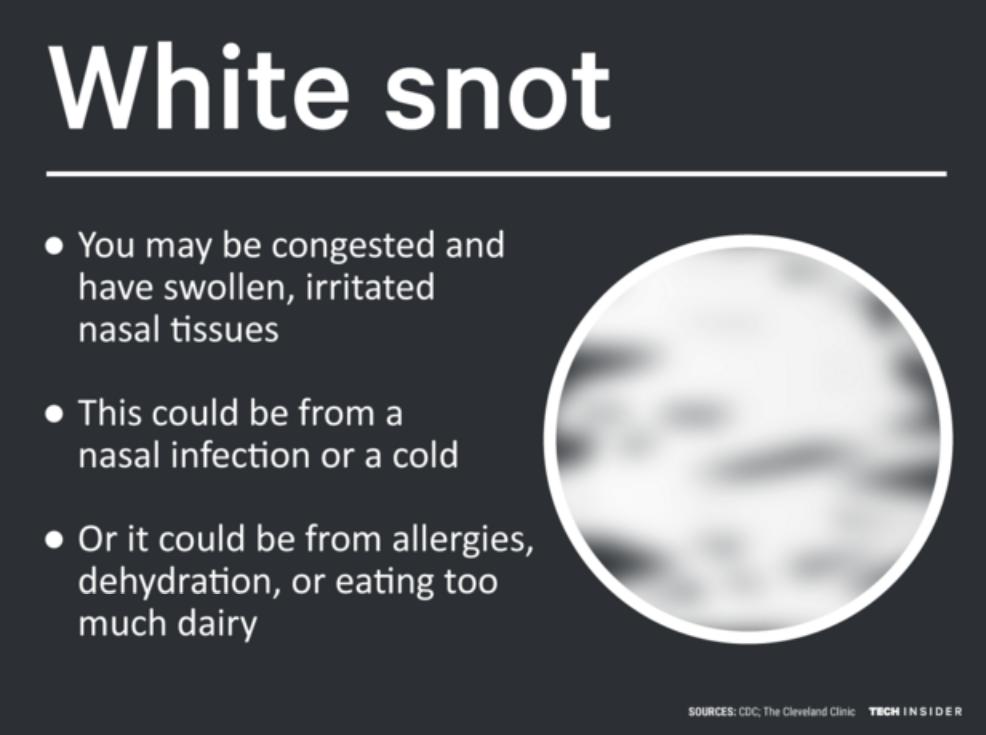 Skye Gould/Tech Insider - techinsider.io
Skye Gould/Tech Insider - techinsider.io
This by far is not the worst type of mucus but it does mean that you are congested. You'll find that this mucus is thicker than usual because somewhere in your nasal cavity there are swollen or inflamed tissues that are sucking up the moisture from your mucus, which is causing it to slowly thicken and become cloudy.
3. Yellow snot
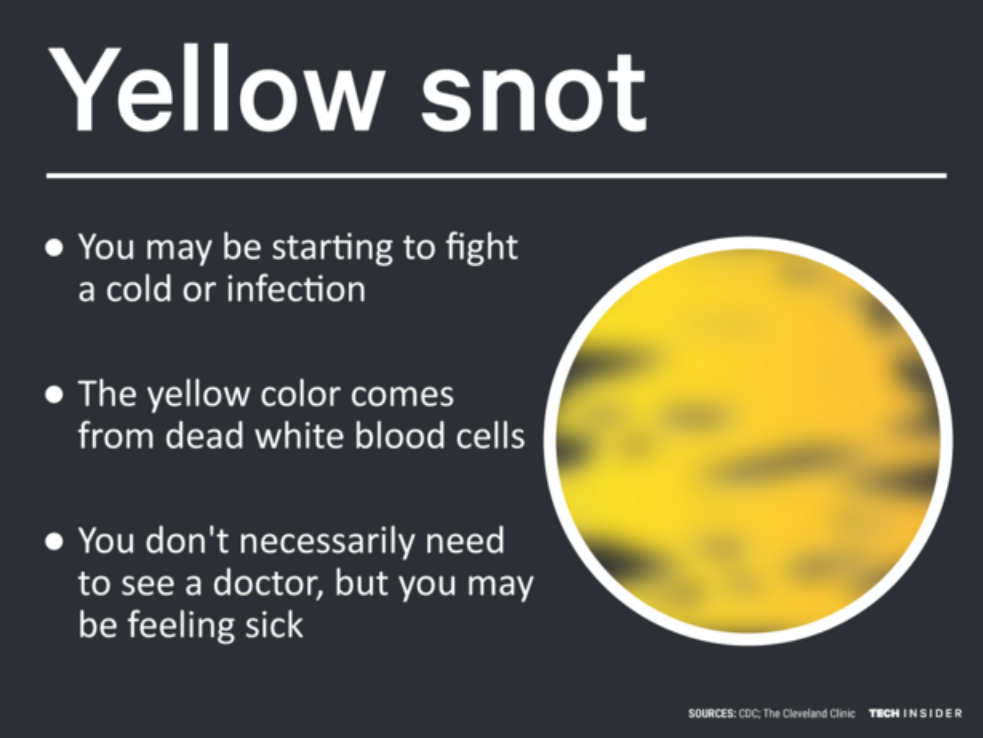 Skye Gould/Tech Insider - techinsider.io
Skye Gould/Tech Insider - techinsider.io
This indicates your body is fighting off a cold. Your white blood cells are in overdrive, using the mucus to flush out dead bacteria. However, what gives the mucus its yellow hue is not the bacteria trapped in your nasal cavity, but the presence of dead white blood cells. As the white blood cells start to break down, the color of the mucus changes. And the more dead white blood cells in your mucus, the color of the mucus will shift from yellow to green.
4. Green snot
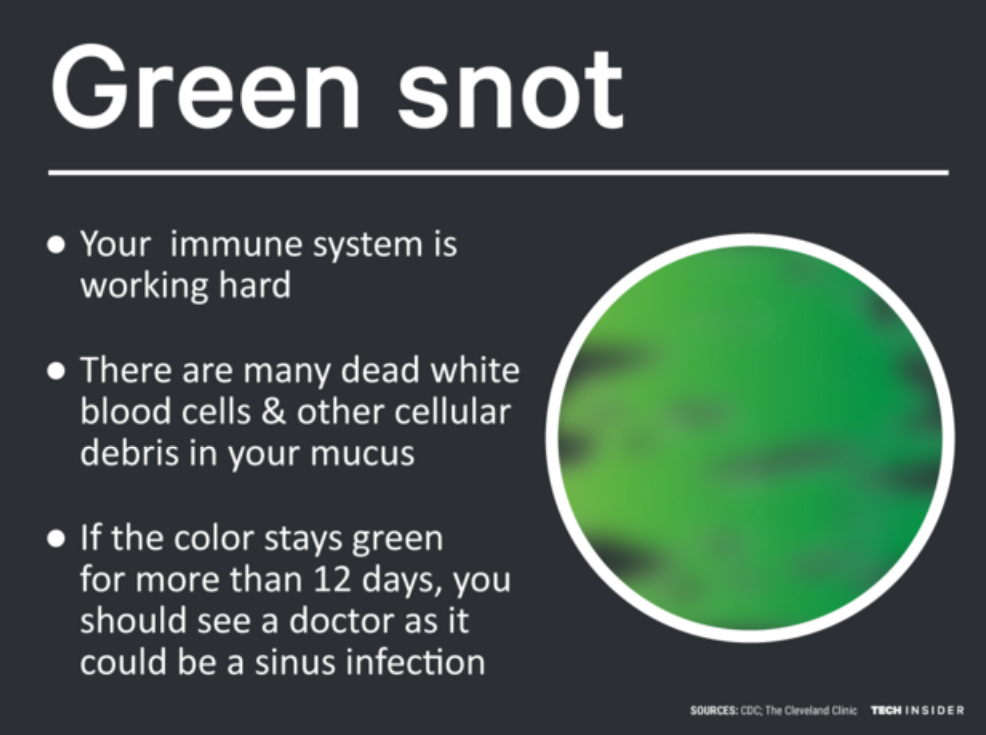 Skye Gould/Tech Insider - techinsider.io
Skye Gould/Tech Insider - techinsider.io
The effect is not much different from white snot. It means that your immune system is at work and that your body is fighting off a bacterial infection. It can also signal a chronic infection of the sinuses.
5. Red/pink snot
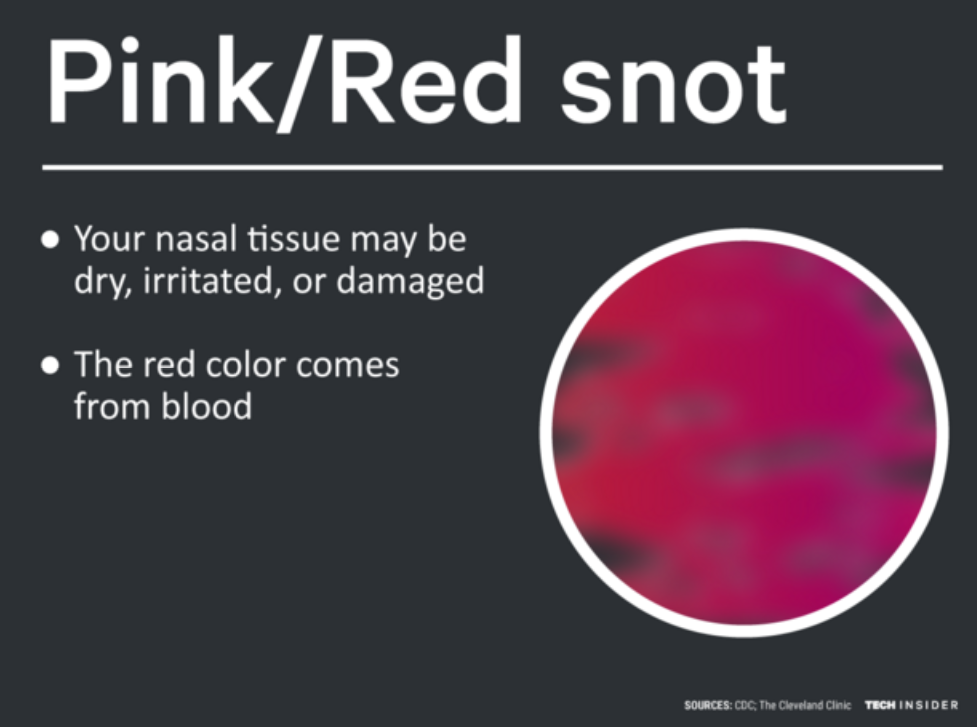 Skye Gould/Tech Insider - techinsider.io
Skye Gould/Tech Insider - techinsider.io
This means there is a lot happening in your nasal cavity. It can mean that there is some physical damage to the skin inside the nose that is causing blood to develop. Or, red mucus is an indication that your nasal cavity is irritated and dry, which can be caused by allergies or infection.
6. Brown snot
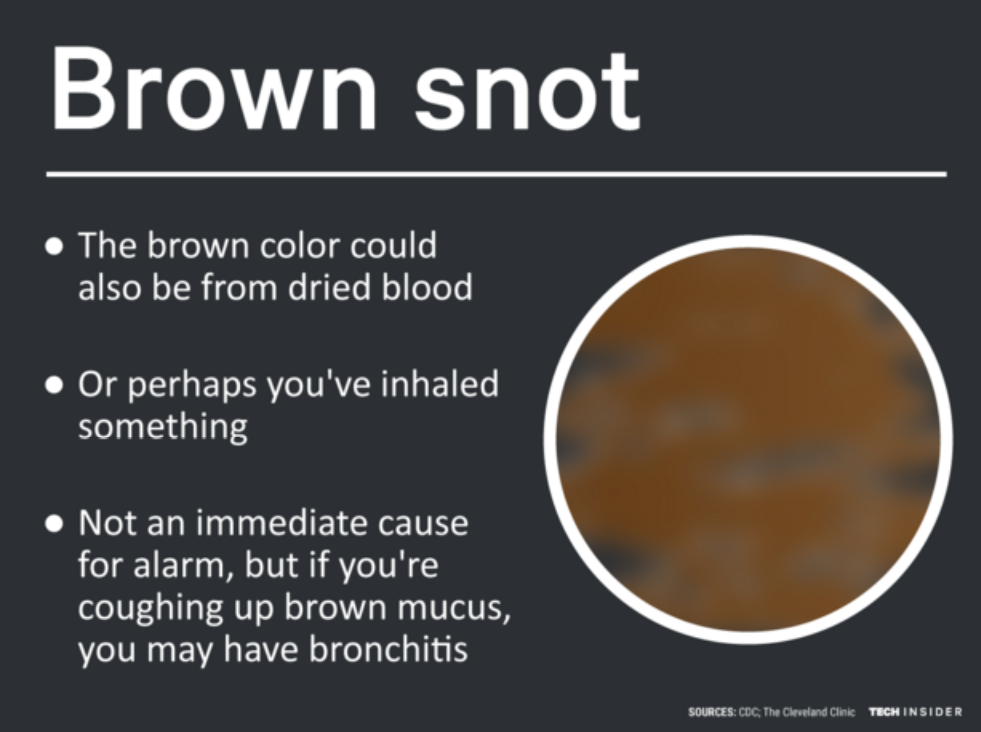 Skye Gould/Tech Insider - techinsider.io
Skye Gould/Tech Insider - techinsider.io
The brown hue in mucus could be due to dried blood or inhaling dirt, smoke, spice or another contaminant. Coughing up brown mucus could also be a sign that a person has bronchitis, however, it's best to consult a doctor if this happens.
7. Black snot
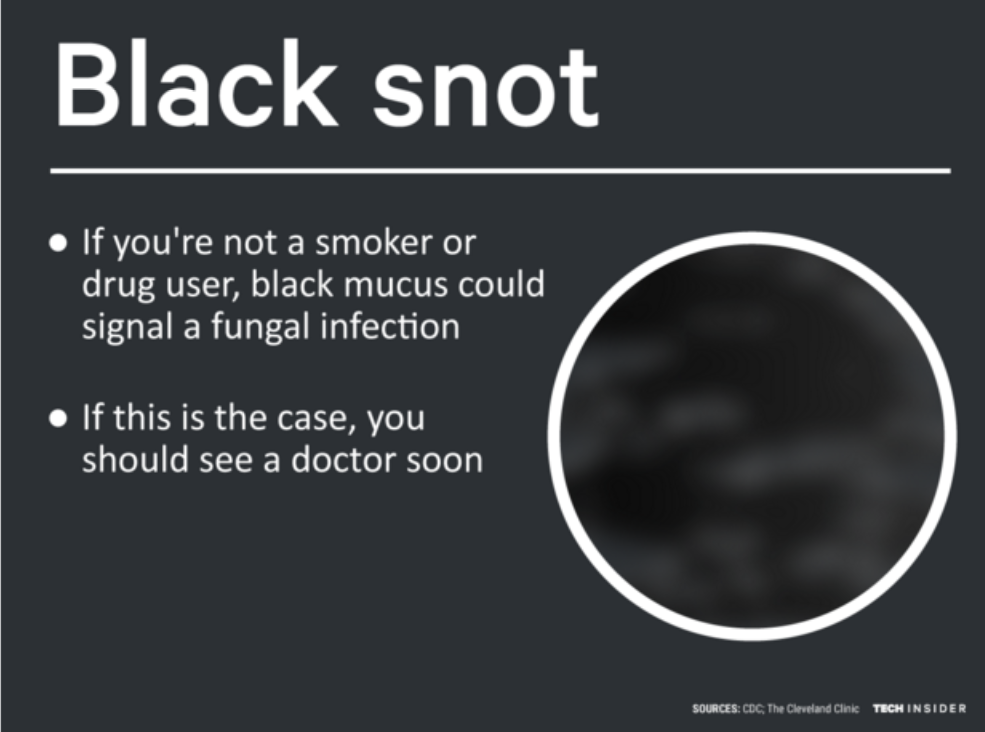 Skye Gould/Tech Insider - techinsider.io
Skye Gould/Tech Insider - techinsider.io
Black mucus is believed to be the most serious type of mucus and it often caused by fungal or mold infections of the sinuses. This is a common appearance in people who have compromised immune systems.
